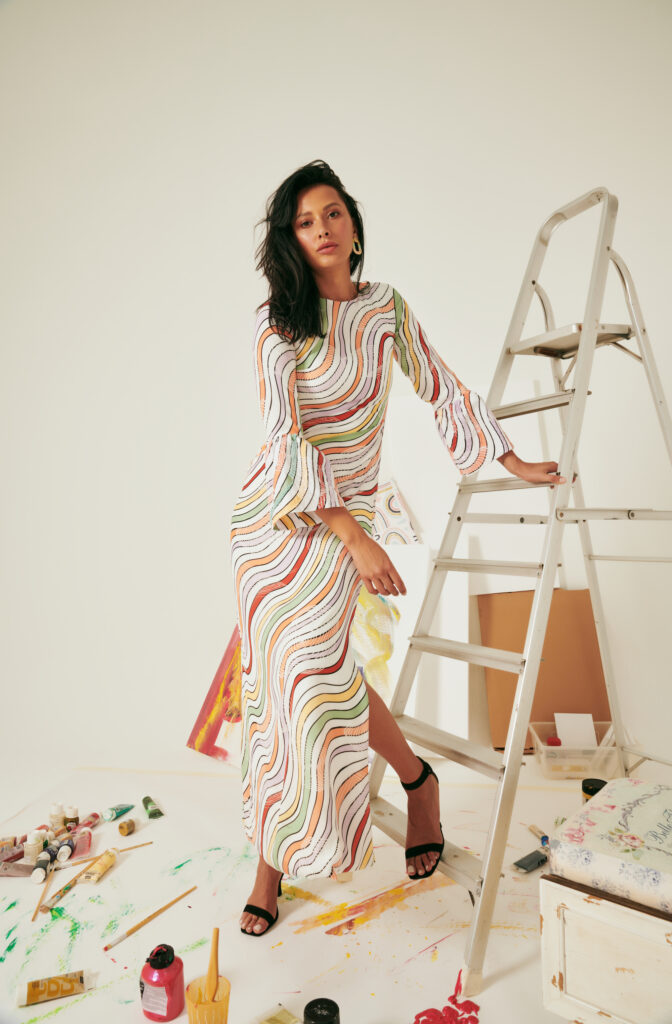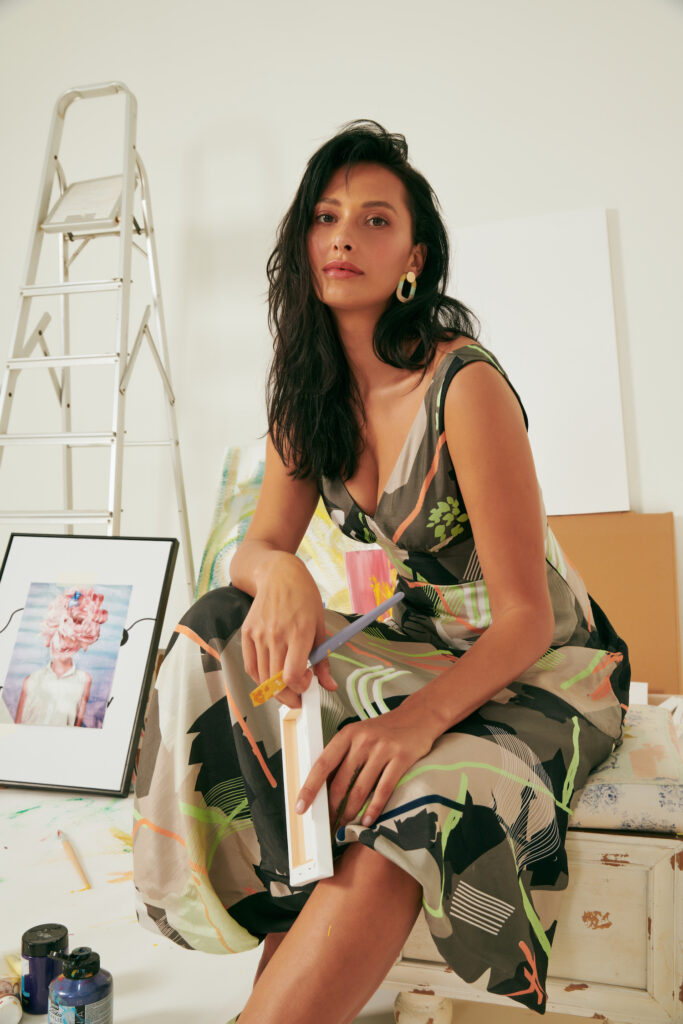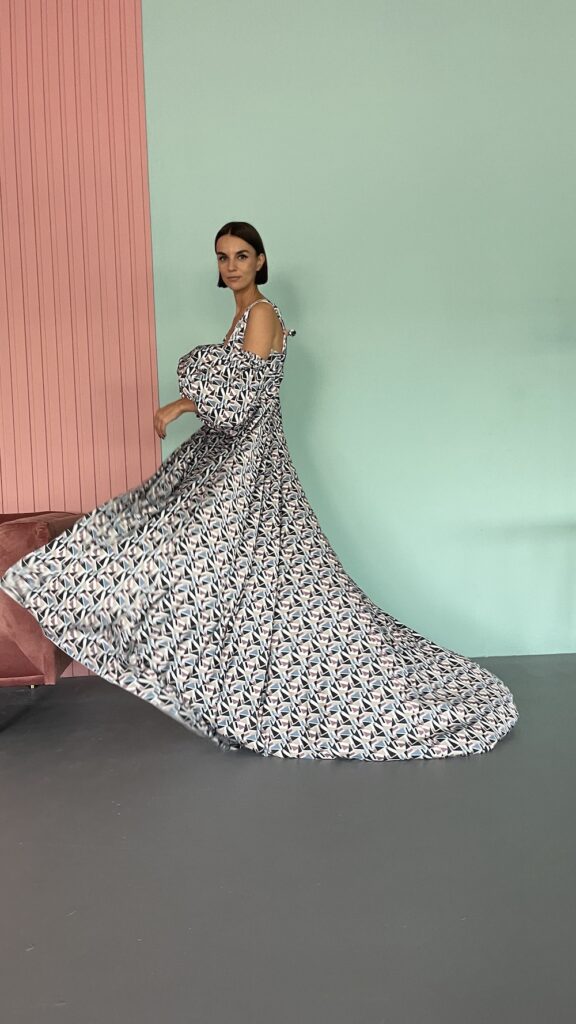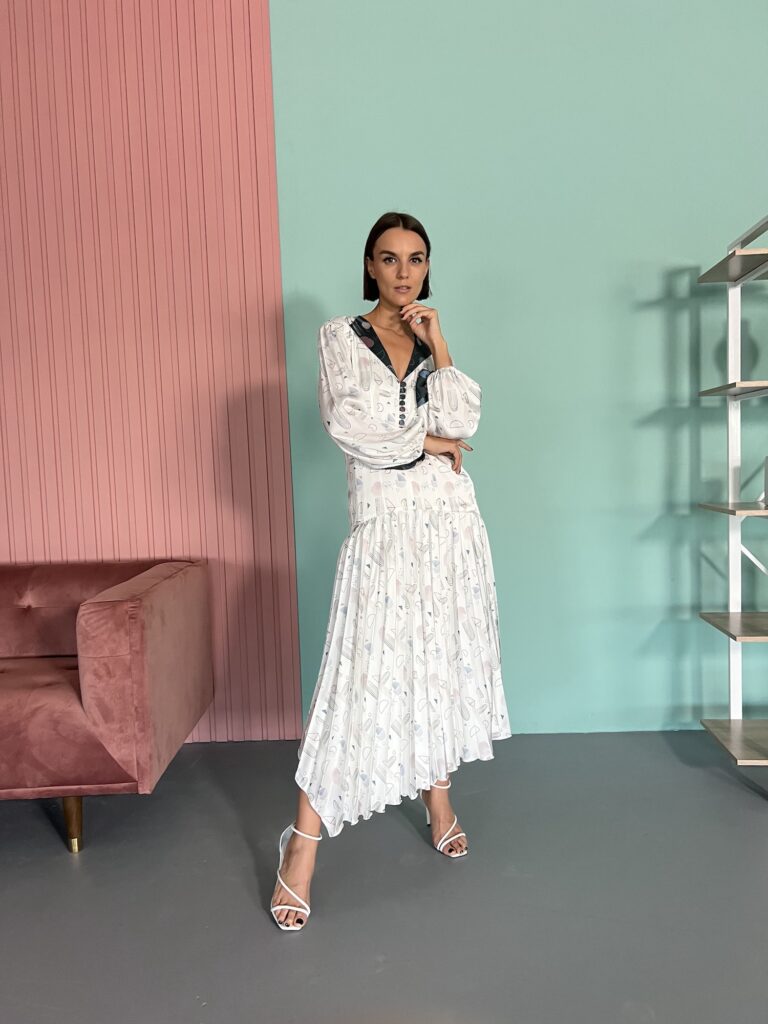Introduction
L’Mane was founded in 2015 by designer Lina Mane as a dedication to producing stylised, one-of-a-kind pieces for the sophisticated women who captures both vintage and contemporary. Infusing a chic elegance into all of her designs, the designer’s eponymous label strives to create thoughtful designs that are of the highest quality.
Having established the label as a result of her passion for design, Lina, has since been adapting her collection to both the market needs and her design understanding. With design experience in diverse global fashion capitals like Mumbai and Milan, Lina brings her global understanding to her collection.
Here are some questions Lina answered in our ‘Meet The Designer’ Q&A.
1. How would you describe your brand aesthetic?
L’Mane is dedicated to creating timeless, statement pieces that transcend the barriers of time. Our printed essentials are suitable for the modern-day style connoisseur and can be worn for any occasion. We believe that every woman has the ability to inspire and influence others around her, which is why I constantly say that we are all about them.
2. What is your first fashion memory?
My first fashion memory is from my youth when I recall my mother buying me a beautiful peach-coloured dress with layers on the bottom and a big bow on the side for my birthday. It was my favorite dress, which I kept for almost a decade, and it was then that I realized I wanted to design timeless dresses that ladies would adore and never want to part with.

3. Where do you look for inspiration?
We believe inspiration is all around us, captivating cues from quotes, paintings, murals, architecture, sculptures, and much more. we use art as a resonating element for a sense of identity, belonging and self- nurturing. Taking this concept forward, each design incorporates prints that have specific meaning to it, thus creating wearable art in the form of fashion.
4. As a designer what has been your biggest challenge to date?
The biggest challenge has been able to merge my interest as a designer and adapt to the market needs. But, as the business expanded, and after a slew of fresh interventions, I eventually figured out who my target market is. I’ve even tried to accommodate the majority of women’s fashion and styling needs.

5. What is your typical creative process?
My creative process is largely influenced by art. I enjoy experimenting with various shapes and colours, which helps me find inspiration in my surroundings. I always begin by sketching print patterns, which serve as a direction for fabric selection and other details.
6. What do you think consumers of fashion need to be made more aware of?
Consumers, I feel, play a critical part in the fashion industry’s long-term viability, even if they are often unaware of it. The ideal investment would be in quality rather than quantity. If we stop buying low-quality clothing, brands will be forced to improve their quality. It will also allow us to keep our garments for long periods of time, which is beneficial to both our wallets and the environment.

7. What do you love designing the most?
Prints for fabrics and dresses are two things I enjoy designing.
8. How do you select your materials and fabric?
Fabric selection is critical because it is what the customer will feel on their skin. I choose fabrics based on how they feel, how long they last, and, of course, the season.
9. What part does sustainability play in your work?
Today environmental and health concerns are a top priority in every sector all over the world and as a citizen, it is really important for me as I don’t believe in take, make and dispose. As a new brand, I want to give back to the environment, society, and the industry by creating designs that are not disposable but can actually be indispensable in someone’s wardrobe.

10. What is your ultimate design goal?
My objective as a fashion designer is straightforward. Make gorgeous outfits for people to adventure and play in. Create designs that are flattering to all women and make them feel good. Affordability is also important, as is connecting people in an inspiring way.
11. What do you think the future will bring to fashion?
Fashion has a long history of pushing boundaries. Fashion is looking to the future with new trends and concepts. We believe that in the coming years, customers and delivering a unique experience will be at the forefront of the fashion business. Although the industry is always changing, future developments will result in a more sustainable, customer-centric, and efficient industry.
Let us know your thoughts about Lina’s work down in the comments section and on socials.


